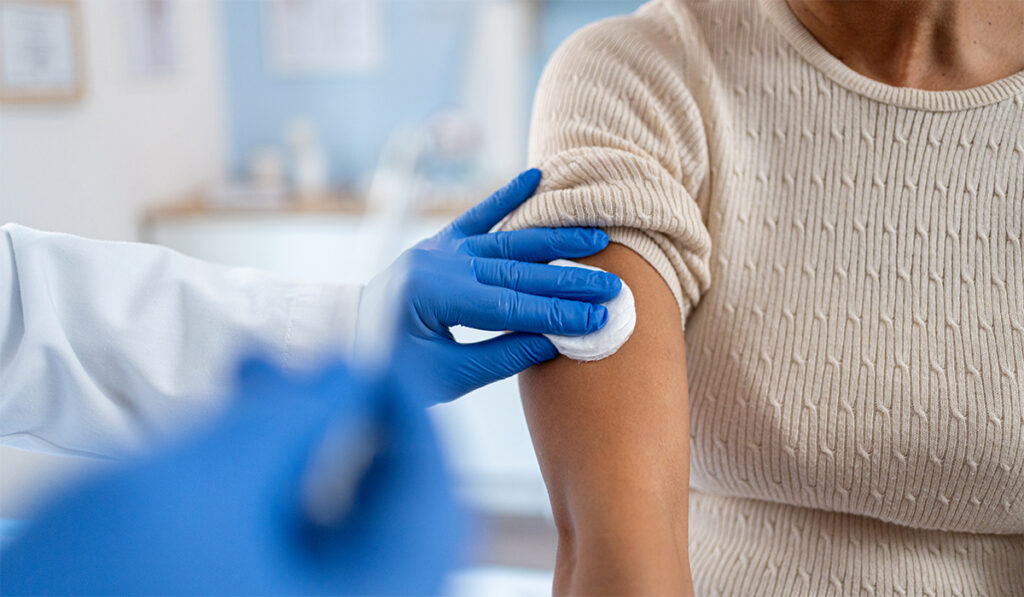A monoclonal antibody called teplizumab can effectively delay the onset of symptomatic type 1 diabetes (T1D), provided that the condition is identified in the early stages. Yet, typically, it isn’t until patients are in the late stage, known as stage 3 T1D, that their symptoms bring them into clinic. At that point there is no approved treatment to change the disease course.
Spearheaded by Daniel Moore, M.D., Ph.D., VUMC’s diabetes immune therapy clinic was established to address this, providing treatment and monitoring for patients identified to have early stage T1D. In 2024, he co-authored an article for the International Journal of General Medicine offering updated screening recommendations for T1D.
“There are ongoing clinical trials being done now to determine whether teplizumab or other medicines can help people at later stages, but for now it’s only being used at the pre-symptomatic stage 2,” Moore said.
Risk Factors for T1D
Type 1 diabetes is fundamentally a polygenic disorder, with 50 or more different loci associated with elevated risk for disease. It is thought to develop from a merging of genetic predisposition and numerous weakly associated environmental risk factors.
“The genes alone are not deterministic; there’s no code to identify that someone will for sure get T1D,” Moore said.
“Developing the disease is kind of like a plinko board often seen on the old ‘Price is Right’. You fall through, hit all those little pegs, you move from one side to the other. No one peg determines the outcome, but altogether, the things you’re interacting with in your life shift the outcome in ways outside your control,” he said.
Discrimination Usurped
The human leukocyte antigen (HLA), also known as the major histocompatibility complex, is the key genetic complex that contributes to T1D development. HLA is responsible for guiding the immune system to detect infections and enabling it to detect foreign agents in the body. Polymorphisms within the HLA, which underlie diabetes, usurp this function, allowing the development of autoimmunity and subsequent pancreatic beta cell destruction by T lymphocytes, Moore explained. This progresses through three stages.
In stage 1, beta cell autoimmunity is identified via two or more islet autoantibodies in the blood of a pre-symptomatic patient with normoglycemia. In stage 2, dysglycemia develops, but the patient remains asymptomatic because the blood sugars are nearly normal. Stage 3 is where the blood sugars become high enough to cause the onset of symptoms and is the standard diagnostic time window for T1D.
Tiered Screening
“Because treatment is only available for individuals who do not yet have classic T1D symptoms, they must be identified through screening,” Moore said.
Screening priorities fall into tiers. If a patient has a family member with diabetes, particularly if it is a close family member, Moore considers them high-risk and strongly recommends that they be screened. Second, are those who have a familial history of autoimmune disease and for whom a provider has concerns about diabetes, such as a rising A1C. If the individual with T1D is not in the home, screening is often missed for at-risk, but more distant, relatives. Moore says providers today can help patients identify these out-of-state relatives.
The screening itself consists of detecting autoantibodies in the blood.
“There are about five autoantibodies you can screen for that are specific for T1D. If you’re positive for two of these, you are at the very least in stage 1. You then need further glucose tolerance testing to be classified as stage 1, 2 or 3,” he said. “Our diabetes immune therapy clinic provides this additional testing for anyone who is identified to be positive for two or more autoantibodies.”
Teplizumab
Moore explained teplizumab works by downregulating the T lymphocytes that are attacking beta cells, through binding to CD3 surface receptors and driving a process known as T cell exhaustion. Patients receive the treatment every day for two weeks, limiting the time window for vulnerability to infections.
Moore is active in the Type 1 Diabetes TrialNet Study Group, for which VUMC has been a clinical center for over a decade under the direction of William Russell, M.D. Together they worked on pivotal studies that found that teplizumab prolonged the amount of time patients have before they require insulin, extending the time to diagnosis by 32.5 months compared to placebo.
“Right now, the challenge is in finding those pre-symptomatic people who can be helped by this therapy.”
“Right now, the challenge is in finding those pre-symptomatic people who can be helped by this therapy. Only 10 percent of the people who newly develop T1D are in the high-risk population, meaning they have a first-degree relative with the disease. Hopefully, we can start screening people who are at secondary risk, those with other autoimmune conditions in the family especially with any concern for diabetes,” Moore said.
“Even if patients don’t select immune therapy, knowing they have early T1D can help them adjust to the diagnosis, learn more, and avoid complications of diabetes such as diabetic ketoacidosis,” he said.




